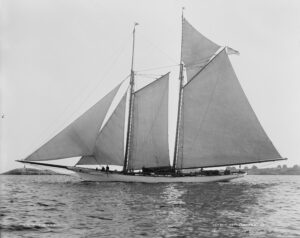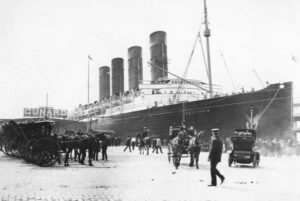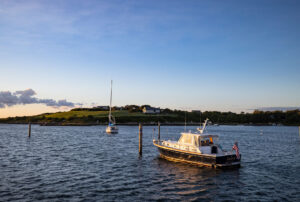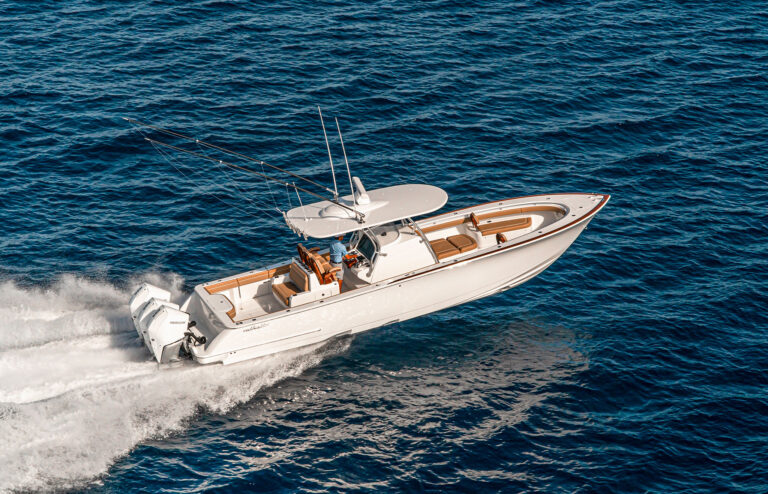Boat restorations vary from project to project. Some boats might be structurally sound, but need updated wiring and electronics, plumbing or a paint job. Others might be weak in the knees and require a complete rebuild, starting with nothing but the bare hull. A 1994 Marlin 350 and a 1970 Formula 233 represent two different types of refits.The Marlin 350-SF was a solid offshore center console in need of a face-lift when Tommy Solomon bought it in 2009. “For a boat of that vintage that was fished offshore to be in such good structural shape was amazing to me,” says Solomon, 49, the owner of Tommy Solomon Yacht Repair & Restoration (www.TommySolomon.com) in Edgewater, Md. “You would expect a boat like that to be torn up — riddled with stress cracks from one side to the other. They had fished this boat in tournaments year after year.”

The Marlin is Solomon’s personal boat. “I had a ball doing this one for myself,” he says. “Usually my work is for others, and I never made the time to find and work on a boat for me.”
A friend told Solomon about the deep-vee Marlin, which was listed on a website as a repossessed boat. “After thinking about it for a while and beating up the bank, I walked away with a fine catch,” says Solomon. “Did I ever get a great deal. It’s vulgar. I almost felt like going to church and asking for forgiveness.”
He worked on the boat as time permitted. It had a good hull, so he focused on the console and head. He worked with Engineered Marine Systems in Annapolis, Md., to rewire the helm and install electronics. The console structure was OK, but Solomon redesigned the panel layout for the electronics displays and other components, such as the molded section of fiberglass that houses the compass.
“All of the holes from the previous components were filled in with fiberglass and cut back out again,” says Solomon, who established his business in 1996.
He reinforced the console with wood panels encapsulated in fiberglass and vinylester resin. The wood provided a backing for mounting the electronics and switches. He also rebedded the bow rail, cleaned out the 250-gallon fuel tank, replaced all fuel lines, reinforced the transom with fiberglass and painted the hull, deck, console and leaning post with Awlgrip Awlcraft.
He had the boat repowered with twin 300-hp Evinrude E-TEC 2-strokes, and he installed Lenco trim tabs. Top speed is about 45 knots, with a cruise of 36 knots. “She rides in seas most center consoles would be tossed around in,” says Solomon, who continues to work on the boat. This winter, he made aluminum bezels for LED lights throughout the boat. The bulk of the refit took about five months, from November 2009 to April 2010.
Dan Patten spent about the same amount of time restoring a Formula 233, but the work was non-stop. The boat, which the owner bought for $300, came to Patten as a beat-up fiberglass shell. Another repair company had built a split-level composite deck (in two sections), and the original fuel tank was still under the cockpit sole. The original 233 from 1970 had a dual console, starboard helm, windshield and cuddy.
The upper part of the transom’s wood core was rotten. “The outer portion of the transom had millions of holes and gouges and grinding marks. It looked like it had been machine-gunned,” says Patten, 61, who owns and operates Dan’s Marine Fiberglass in Westbrook, Conn. (www.dansmarinefiberglass.com).
Patten used a plywood template that the owner had supplied to construct the deck cap for the transom, hull sides and bow. He fiberglassed together the two-section deck and glassed in fore and aft bulkheads. He glassed together the deck cap and hull, making this a seamless joint. And he painted the hull, deck and liner with Awlcraft and installed a rubrail.
Patten worked about 350 hours on the boat — a conservative estimate — and none of the work was simple, he says. “It definitely was a custom job, with challenges along most of the way,” says Patten, who began repairing fiberglass and painting boats in 1977. Case in point: the rubrail.
“Most of the rubrails have an overset to cover the overlap of the hull-to-deck joint,” he says. “I needed one that did not have that overlap because the hull-to-deck joint is seamless. You wouldn’t believe how hard it was just to find one, and I still had to modify it.”
The owner had purchased a leaning post on eBay and a console from powerboat builder Contender. Patten worked with the owner to install the two components. The owner later had a T-top installed, as well as an Armstrong engine bracket, and he repowered with a pair of used 150-hp Yamaha 2-strokes.
Patten has restored about 20 boats since 2005, from a Dyer dinghy to a 1956 Atlantic 30 sailboat. The Formula 233 — the boat that marked the founding of Formula in 1962 by Don Aronow — and another Formula (a 1972 233), stand out as Patten’s favorite projects.
“Out of all the boats I’ve worked on, the changes that occurred in the renovation of [the 1970 Formula 233] were the most dramatic,” he says. “At the end, I looked at it and said, ‘Wow, I did that?’ ”



See related articles:
– ‘Sustainable passion’ is a key ingredient
– DIYers: You’re going to need some epoxy
This article originally appeared in the April 2012 issue.










